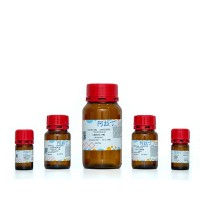Stereospecific Synthesis of P-Chiral Analogs of Oligonucleotides
互联网
2226
As has been emphasized in corresponding chapters of this book, isotopic or elemental replacement of any of two nonbridging oxygens attached to internucleotide phosphorus atom(s) by substituent X (Fig. 1 ) creates, by virtue of asymmetry, new center(s) of chirality and results in the formation of m diastereoisomers of the oligonucleotide’s congener. The number m is determined by the number n of modified phosphates, according to formula m = 2 n . With the exception of diastereoisotopomers (X= 17 O or 18 O), which are nonseparable by any so-far-developed separation technique, separation of diastereoisomeric oligonucleotides containing modified phosphates (Fig. 1 , X = S; Se; C 2 H 5 O-; CH 3 -; ArNH-; R 2 N-) has been achieved by means of chromatographic techniques. Effectiveness of the separation depends, however, on the number of modifications within the oligonucleotide chain and is practically limited to n =l,2. Achievements in this field have been exhaustively summarized by Zon ( 1 ).
Fig. 1. Modifications to the DNA phosphate groups.





